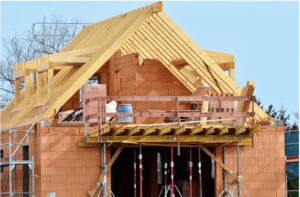
It is imperative to acknowledge the critical importance of fall prevention in safeguarding workers and maintaining a safe, productive work environment. Falls are among the leading causes of severe work-related injuries and deaths. Therefore, understanding and implementing key fall protection measures is paramount in any workplace environment, particularly in industries such as construction, manufacturing, and utilities where employees often work at heights. This guide will highlight essential strategies to mitigate the risk of falls, elucidating safe work practices, the use of personal protective equipment (PPE), and the creation of a comprehensive fall protection program. It is our hope that this guide will serve as a valuable resource for employers and workers alike, fostering a culture of safety and vigilance that will ultimately protect lives and enhance productivity. Whether you are a construction worker, factory employee, or manager responsible for ensuring the safety of your team, this guide is designed to equip you with the necessary knowledge and tools to prevent falls in the workplace.
Understanding the Risks
Before diving into the solutions, it’s important to understand why falls occur in the workplace. Falls can be a result of various factors, including but not limited to, lack of proper training, failure to use protective equipment, poor environmental conditions such as slippery or uneven surfaces, and human error. By recognizing these risks, employers and employees can develop a better understanding of what preventative measures need to be put in place to ensure a safer work environment. Proper training plays a vital role in enabling workers to identify and mitigate hazards effectively. Regular equipment inspections are also crucial for detecting any faults or defects that may compromise safety. Taking a proactive approach to fall prevention is key, rather than reacting after an accident occurs. Understanding the risks is the initial step towards prevention, potentially saving lives. Therefore, it is essential to educate yourself and your team about the potential workplace hazards.
Safe Work Practices
One of the most crucial steps in preventing falls is establishing and enforcing safe work practices. This includes training employees on how to properly use equipment, such as ladders and scaffolding, ensuring proper guardrails are in place, and keeping work areas free from clutter or debris that may cause trips or slips. It’s also important to have a clear communication system in place, where workers can report any potential hazards they may come across while performing their duties.
A good rule of thumb is to have a safety checklist that employees can follow before starting any task, ensuring all necessary precautions are taken. This can also include setting up emergency procedures and conducting regular drills, so workers know what to do in the event of an accident. If the daily work involves working at heights, it’s essential to have a fall protection plan in place that outlines specific procedures and equipment to be used.
Establishing a Comprehensive Fall Protection Program
As mentioned earlier, having a fall protection program in place is essential for industries where working at heights is common. A comprehensive program should include risk assessments, safety policies and procedures, employee training, regular inspections and maintenance of equipment, and emergency response plans. It should also involve continuous monitoring and evaluation of the program’s effectiveness, making necessary changes as needed. Namely, a good working safely at heights course will provide the necessary information on establishing a fall protection program. Gaining the skills required to work safely on temporary elevated work platforms, scaffolding or ladders will be an essential component of the program.
Employers should involve their employees in the development and implementation of the fall protection program, as they are on the front lines and can provide valuable insights into potential hazards. Use the program as an opportunity to educate and engage employees in promoting a safe work environment for themselves and their colleagues.
Personal Protective Equipment (PPE)

In addition to safe work practices, providing and enforcing the use of personal protective equipment (PPE) is crucial in preventing falls. PPE, such as harnesses and safety lanyards, can help protect workers in the event of a fall. It’s important to ensure that all PPE is properly fitted for each employee and regularly inspected for any signs of wear or damage. Employers should also train employees on how to properly use and maintain their PPE, as well as the consequences of not using it.
A lot of workers may see PPE as an inconvenience, but it’s crucial to emphasize its importance in preventing serious injuries and even fatalities. Employers should provide the necessary PPE free of charge and make sure that employees know how to properly use it. Having the right equipment and knowing how to use it can make all the difference in preventing falls.
Continuous Improvement and Workers’ Involvement
Continued success in fall prevention requires regular assessment and updates to safety protocols. This dynamic evolution of procedures ensures that the organization is responding appropriately to new risks or changes in the working environment. This process involves not only managers and safety experts but workers as well. It’s vital to create an environment where workers feel comfortable voicing their safety concerns without fear of reprisal. Actively fostering worker engagement in safety discussions helps employers gain valuable real-time insights into potential risks and develop effective countermeasures. Regular training sessions, interactive safety meetings, and anonymous suggestion boxes serve as platforms for workers to openly share their thoughts and concerns regarding fall prevention and other safety-related topics. Remember, a successful fall prevention plan is one that constantly evolves based on the real-world experiences and concerns of the workforce, ensuring their well-being and fostering a culture of safety.
Post-Incident Procedures and Reporting
In the unfortunate event of a fall or other safety incident, it’s vital to have a clear procedure in place for reporting and responding to the incident. Workers must know who to report to and what information to provide. The report should include details of the incident such as the date, time, location, individuals involved, a description of what happened, and any injuries sustained. This information can provide valuable insights into how the incident occurred and help identify areas for improvement in the existing safety protocols. Additionally, employers should ensure that workers receive appropriate medical attention in a timely manner following a fall. Remember, an effective response can prevent further harm, ensure compliance with regulatory requirements, and contribute to the continuous improvement of the fall prevention program.
Preventing falls in the workplace requires a continuous commitment to the safety and well-being of every worker. By implementing robust safety protocols, providing comprehensive training, and fostering open safety discussions, organizations can significantly reduce the risk of falls. While having appropriate personal protective equipment and safety measures in place is crucial, the most effective prevention strategy lies in cultivating a safety culture where everyone feels accountable for their own and their colleagues’ well-being. Remember, every accident prevented is a life saved. Let’s all contribute to creating safer workplaces, one step at a time. With these key steps in place, we can strive towards a future where falls are prevented and workers are safeguarded from harm.





